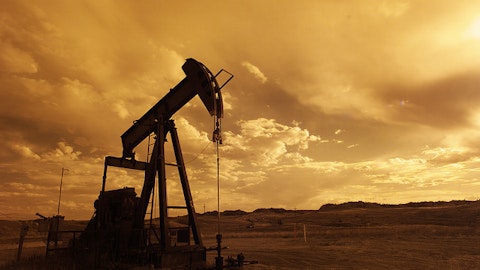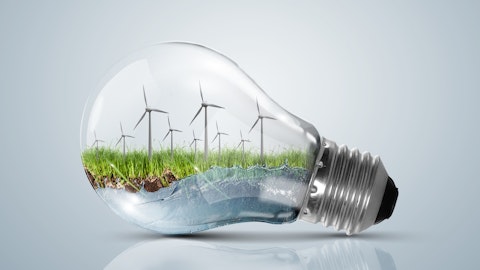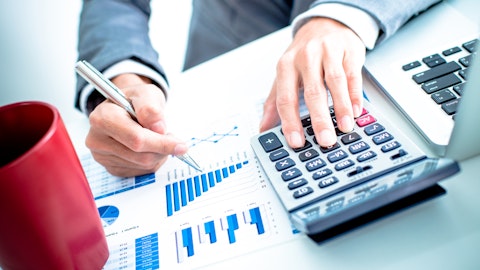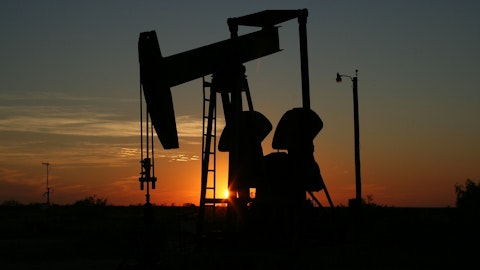Are Chevron’s Dividends Safe?
Are Chevron’s dividends safe?
That depends on what the definition of ‘safe’ is. Are Chevron’s dividend payments as secure is Coca-Cola’s (KO) or Johnson & Johnson’s (JNJ) or Procter & Gamble’s (PG)? Of course not. With that said, there is a very high likelihood Chevron does not cut its dividend payments.
First, oil prices are highly volatile. They are down now, but they will come back up eventually (then they will fall again, then they will rise again). Oil prices are extremely depressed right now. Here’s how Chevron can weather the storm of low oil prices over the next 2 years:
The company pays out around $8 billion a year in dividends. Additionally, the company announced a planned capital expenditures budget of $26.6 billion in 2016. Of the company holds its dividend constant and capital expenditures are around the same level in 2017 as planned 2016 expenditures, then Chevron will need around $61 billion over the next 2 years to finance its dividend, operations, and growth.
Chevron Corporation (NYSE:CVX) plans to generate between $5 and $10 billion over the next two years from asset sales. After accounting for asset sales, the company will need between $51 and $56 billion over the next 2 years from operations and new debt.
Operating cash flows in Chevron’s latest quarter were $5.4 billion. The average price of oil was around $49 in the company’s 3rd quarter in fiscal 2015. Operating cash flows in the first 2 quarters combined totaled $14.9 billion, with an average oil price of around $56 a barrel.
At current oil prices of around $35 a barrel, Chevron will generate little or no profits from its upstream division. Fortunately, the company’s downstream segment will help carry it through these difficult times. I expect the company to continue generating around $5 billion a quarter from operating cash flows at current prices. This comes to $20 billion a year, or $40 billion over the next 2 years.
After accounting for asset sales and operating cash flows, Chevron will still need between $11 billion and $16 billion in cash over the next 2 years. In addition, the company has around $7.5 billion in debt coming due over the next 2 years. This means that Chevron must finance between $18.5 and $23.5 billion over the next two years.
The company currently has about $13 billion in cash on its balance sheet. Subtracting that out means Chevron will need to raise between $5.5 billion and $10.5 billion in debt over the next two years. It is very likely that the company will be able to issue debt of between $5.5 billion and $10.5 billion over the next two years. The company issued $6 billion in debt earlier this year, with an interest rate of under 2%. The debt was rated AA.
Does management have the will to maintain its dividend payments? I believe the answer to that question is a “yes” as well (unless management pulls a ‘Kinder Morgan’). Here’s what Chevron’s CEO John Watson said in the company’s 3rd quarter earnings call:
“I would like to start by reinforcing that our priorities – financial priorities are unchanged. Our first priority is to maintain the dividend and grow it as the pattern of earnings and cash flow permit. As Pat mentioned, we announced our quarterly dividend earlier this week and are very proud of the fact that we’ve increased the annual per-share payout for 28 consecutive years. Back in March, we committed to delivering free cash flow to cover the dividend in 2017. At that time, the futures market was envisioning $70 prices in 2017. Today, the futures market is lower, but our intent remains the same.”
In an unprepared response to a questions, Watson said the following:
“But there is some uncertainty on price, and, look, I know my shareholders value our dividend. I know our shareholders value increases in the dividend. And I know they value us investing in high-return projects, and so there is some uncertainty on price. And we want to be sure that – we’ve kept our balance sheet in good condition, and we want to be sure we just strike that right balance to continue to pay and grow the dividend and invest in good projects. So we’re just working through the cycle and kind of living within our means while we take cost down.”
The bottom line is that projections are difficult (and often inaccurate). We don’t know what oil prices will do over the next 2 years, but Chevron’s management is prepared to continue cutting costs and managing cash flows to pay rising dividends. To be fair, I’d expect 1% growth or so over the next two years – just enough to continue making the claim the company can pay rising dividends – but management does prioritize the dividend.
Expected Total Returns
Chevron has grown earnings-per-share at an average of around 7.5% a year over the last decade. I expect Chevron to continue growing earnings-per-share in the 6% to 8% a year range over full economic cycles.
Obviously the company won’t be growing when oil prices are collapsing. Over the long-run, oil prices will stabilize. The company’s growth will come from a mix of increased energy demand, above-industry-average production growth, and share repurchases.
In addition to this earnings growth, Chevron offers investors a dividend yield of nearly 5%. The company’s dividend yield combined with its long-term expected growth rate gives investors expected total returns of between 11% and 13% a year over the long run.




